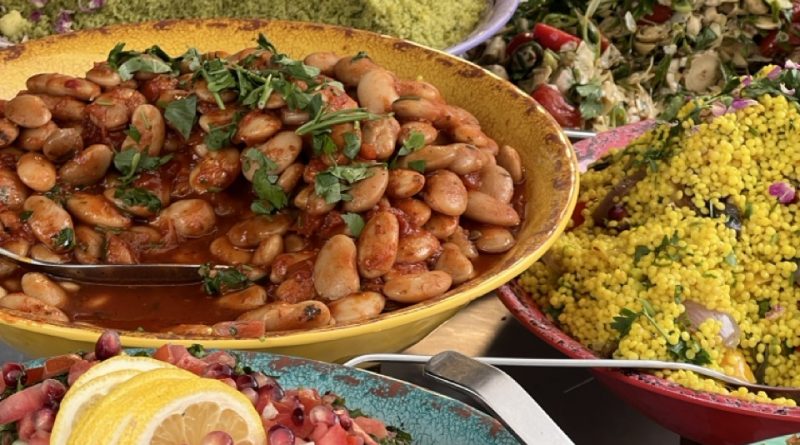The History of Ice Cream Sundaes and Their Variations
Ice cream sundaes are a beloved dessert that has captivated taste buds since their inception. With a delightful combination of creamy ice cream, various toppings, and sometimes sauces, they serve as a versatile treat that can be enjoyed by people of all ages. This article delves into the rich history of sundaes, tracing their origins, exploring their evolution, highlighting regional variations, and examining their cultural significance in contemporary society.
The Origins of Ice Cream Sundaes: A Sweet Beginning
The exact origins of the ice cream sundae are cloaked in delicious mystery, but most accounts trace its beginnings to the late 19th century in the United States. One popular theory suggests that the sundae was created in the town of Ithaca, New York, around the 1890s. It is said that a local pharmacist, to promote ice cream sales on Sundays, served a scoop of vanilla ice cream topped with syrup and a cherry, calling it a "Sunday." The spelling evolved over time, transforming into "sundae," in an effort to avoid any religious connotations.
Other accounts attribute the sundae’s invention to a similar creation in Chicago, where a soda fountain owner served a special ice cream dish with syrup and fruit. This delightful concoction quickly gained popularity, and as it spread across the nation, various toppings and flavors began to emerge. By the early 1900s, the sundae had become a staple in ice cream parlors and soda fountains, appealing to both children and adults alike.
The sundae’s early popularity was closely tied to the growing ice cream industry, which saw a surge in production during the late 19th and early 20th centuries. Innovations in ice cream manufacturing made it more accessible, and sundae recipes began to appear in cookbooks and dining menus across the United States, solidifying the dessert’s place in American culture.
Evolution of Sundae Recipes: From Classic to Modern
As the sundae gained popularity, so too did the creativity surrounding its preparation. The classic sundae typically consisted of a scoop of vanilla ice cream topped with chocolate syrup, whipped cream, and a cherry. However, variations began to emerge in the early 20th century, reflecting regional preferences and ingredient availability. Flavors began to diversify, with chocolate, strawberry, and butterscotch becoming common toppings, and nuts, fruits, and crumbs added texture and flavor.
The post-World War II era saw a surge in ice cream consumption and the commercialization of the sundae. Ice cream parlors introduced extravagant concoctions, often featuring multiple scoops, a variety of toppings, and even flamboyant garnishes such as sparklers. Signature sundaes, such as the hot fudge sundae and banana split, became iconic, further pushing the boundaries of what a sundae could be.
In contemporary times, the sundae has evolved even further, accommodating health trends and dietary restrictions. Vegan, gluten-free, and low-sugar options have emerged, with alternative bases made from coconut milk, almond milk, or even avocado. Gourmet topping choices have also expanded to include artisanal sauces, superfoods, and exotic fruits, reflecting a growing inclination towards unique flavor profiles and experiences.
Regional Variations of Sundaes Across the Globe
While the sundae is primarily associated with American culture, similar desserts exist around the world, each showcasing regional flavors and ingredients. In Italy, for example, the "coppa" is a popular dessert that features gelato layered with fresh fruit, nuts, and chocolate. The coppa exemplifies a more sophisticated presentation, highlighting the quality of ingredients, a hallmark of Italian cuisine.
In Mexico, the "nieves" or "raspados" incorporate shaved ice and fruit syrups, creating a refreshing treat in warmer climates. Vendors serve these icy delights topped with fresh fruits, condensed milk, or tamarind syrup, offering a unique twist on the traditional sundae. The use of vibrant flavors and textures exemplifies the rich culinary traditions found in Latin American regions.
In Japan, the "sundae" often takes on a unique form, incorporating matcha (green tea powder) and sweet red bean paste as standard toppings. This fusion of traditional Japanese flavors with the classic ice cream base reflects the country’s innovative spirit while honoring its culinary heritage. These regional variations illustrate how the sundae has transcended cultural boundaries, adapting to local tastes and preferences worldwide.
The Cultural Significance of Sundaes in Today’s Society
In contemporary society, ice cream sundaes hold a special place not only as a dessert but also as a symbol of celebration and nostalgia. They are commonly featured in social gatherings, family outings, and special occasions, acting as a unifying treat that brings people together. The act of sharing a sundae, whether at a parlor or homemade, fosters connections and creates lasting memories.
Sundaes have also become a canvas for culinary creativity and artistic expression, with countless variations appearing on social media platforms. The rise of food photography has transformed the way desserts are presented, with elaborate sundaes often served in striking vessels and adorned with colorful toppings. This trend has not only increased the popularity of sundaes but has also influenced dessert culture, encouraging chefs and home bakers to explore new flavor combinations and presentations.
Moreover, ice cream sundaes are increasingly linked to social movements and causes, with companies creating special flavors to support charities or raise awareness for various issues. This modern approach to the sundae taps into consumer values, merging the joy of indulgence with the desire to contribute positively to society, thus reinforcing the sundae’s role as more than just a dessert but a means of expression and connection.
The history of ice cream sundaes is a rich tapestry woven with innovation, tradition, and cultural significance. From their humble beginnings in the late 19th century to the diverse variations enjoyed worldwide today, sundaes continue to be a beloved dessert that brings joy and nostalgia. As culinary creativity flourishes, the sundae remains a dessert that not only satisfies our sweet tooth but also connects us across cultures and generations, ensuring that this delightful treat will endure far into the future.
